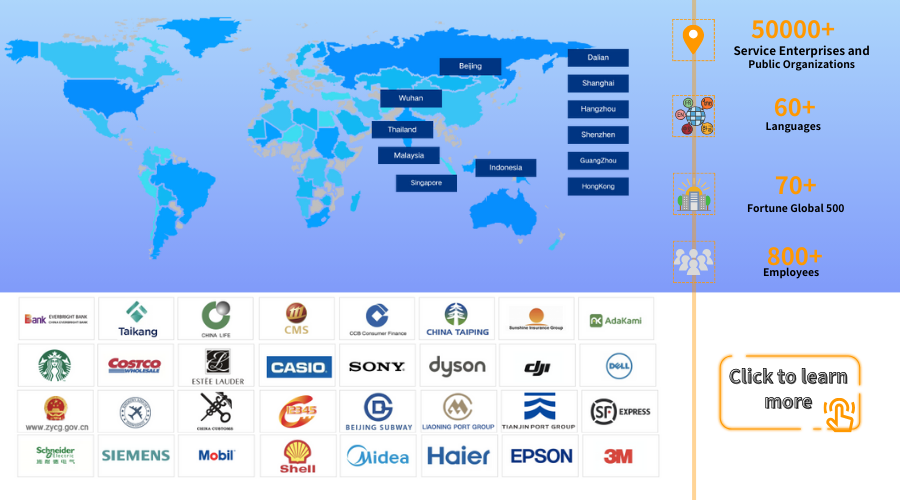Driven by the "dual carbon" goals, the new energy industry has witnessed explosive growth. From electric vehicles (EVs) and photovoltaic (PV) power stations to energy storage equipment, new energy products are gradually penetrating all areas of production and daily life. As market competition intensifies, consumers not only focus on product performance and price but also impose increasingly strict requirements on service quality. As a key tool for improving service standards, customer service management systems are helping new energy enterprises meet customers' expectations for high-quality services and achieve the coordinated development of services and business.
I. Technology Empowerment: Accurate Responses to Complex Inquiries
New energy products integrate advanced technologies, featuring complex technical principles. The problems customers encounter during use are often professional and diverse. Take EVs as an example: issues such as the principle of battery range degradation, troubleshooting of advanced driver-assistance systems (ADAS), and charging pile compatibility all require professional answers. Traditional customer service staff struggle to fully master such extensive technical knowledge, resulting in low service efficiency.
The intelligent knowledge base built into
customer service management systems structurally integrates content related to new energy products, including technical parameters, operation guides, and fault code interpretations. When a customer consults, the system uses natural language processing (NLP) technology to quickly match relevant knowledge entries and push them to customer service staff, helping them accurately respond to customer questions. Some systems are also equipped with intelligent Q&A robots that can directly handle common questions, such as "How long does it take to fully charge an EV?" and "How to maintain PV panels daily?" This effectively diverts the pressure of inquiries, allowing human customer service to focus on handling complex issues and significantly improving the speed and accuracy of service responses.
II. Omnichannel Integration: Creating a Seamless Service Experience
Customers of new energy enterprises are widely distributed, with diverse access channels including official websites, APPs, WeChat, Weibo, and 400 hotlines. In the past, information across channels was isolated; when customers made repeated inquiries on different platforms, customer service staff could not quickly access historical communication records, leading to disconnected services and poor customer experience.
Customer service management systems enable omnichannel access, centralizing customer inquiries scattered across various platforms into a single workbench. Customer service staff can view customers' historical interaction information across channels at any time, including inquiry questions, solutions, and purchase records, thereby providing personalized and consistent services. For example, if a customer consults about product installation via WeChat and later follows up with a 400 call, the customer service staff can quickly understand the background of the customer's needs, avoid repeated inquiries, and improve service efficiency and customer satisfaction.
III. Work Order Circulation: Ensuring an Efficient Service Closed Loop
After-sales services for new energy products often involve multiple departments and links. For instance, EV maintenance requires collaboration between the technical department, after-sales department, and spare parts warehouse; troubleshooting of PV power stations may involve the installation team and technical support team. In traditional service processes, information transmission relies on manual communication, which is prone to information omissions and processing delays.
The work order management function of customer service management systems provides a standardized and automated solution for service processes. When a customer submits a service request, the system automatically generates a work order and assigns it to the corresponding department or personnel according to preset rules. During the circulation of the work order, the processing progress of each link is updated in real time, and relevant personnel can obtain task information in a timely manner through the system. For complex issues, work orders can be transferred across departments to ensure professional handling. The system can also set up a work order timeout warning mechanism to urge responsible personnel to complete tasks on time, ensuring an efficient closed loop of the service process and significantly shortening the problem-solving cycle.

IV. Data Insights: Driving Continuous Service Optimization
Customer service data of new energy enterprises contains great value. Through in-depth mining and analysis of this data, enterprises can accurately grasp customer needs and optimize products and services. Customer service management systems have powerful data analysis functions that can conduct multi-dimensional analysis of data such as customer inquiry content, service duration, and satisfaction scores.
By analyzing high-frequency customer inquiries, enterprises can identify product design flaws or usage pain points, providing directions for product improvement. For example, if a large number of customers report that a certain model of energy storage equipment has unstable performance in extreme weather, the enterprise can optimize the product's heat dissipation or protection design accordingly. Analysis of customer service satisfaction data helps enterprises identify weak links in services—for instance, if after-sales response is slow in a certain region, the issue can be addressed by increasing service outlets or optimizing personnel allocation. In addition, analysis of customer demand trends can provide references for enterprises' market strategies and new product R&D, helping them seize market opportunities.
V. Intelligent Quality Inspection: Ensuring Stable Service Quality
As the scale of customer service teams in new energy enterprises continues to expand, ensuring stable service quality has become a major challenge. Traditional manual quality inspection methods are inefficient and have limited coverage, making it difficult to fully monitor service quality.
The intelligent quality inspection function of customer service management systems uses AI technology to automatically analyze customer service calls and online chat records. Based on preset quality inspection rules, it scores indicators such as service attitude, script standardization, and completeness of problem resolution. The system can quickly identify non-compliant behaviors or service loopholes of customer service staff during service—such as failure to use standard greetings or omitting key information—and generate quality inspection reports. Enterprises can conduct targeted training and guidance for customer service staff based on the inspection results, promptly correcting service problems, continuously improving service quality, and maintaining the enterprise's good brand image.
In the current era of rapid development of the new energy industry, customer service management systems have become a core tool for enterprises to improve service quality and enhance market competitiveness. From accurately answering technical questions to building an omnichannel service system, and from optimizing service processes to driving data-driven decision-making, customer service management systems comprehensively empower the service upgrading of new energy enterprises. In the future, with continuous technological innovation, customer service management systems will continue to iterate and optimize, providing more solid support for new energy enterprises to achieve high-quality development and helping the industry make steady progress on the path of pursuing high-quality services.
Udesk Customer Service Management System integrates cloud call center, online customer service, and work order system on a single platform, connecting more than 20 domestic and foreign communication channels to enable barrier-free communication with your global customers. It establishes connections with customers through multiple channels, improves sales performance, enhances service quality, and ensures customers enjoy an excellent experience. Grasp customer intentions in real time—converting leads to customers has never been easier!


 Customer Service& Support Blog
Customer Service& Support Blog


